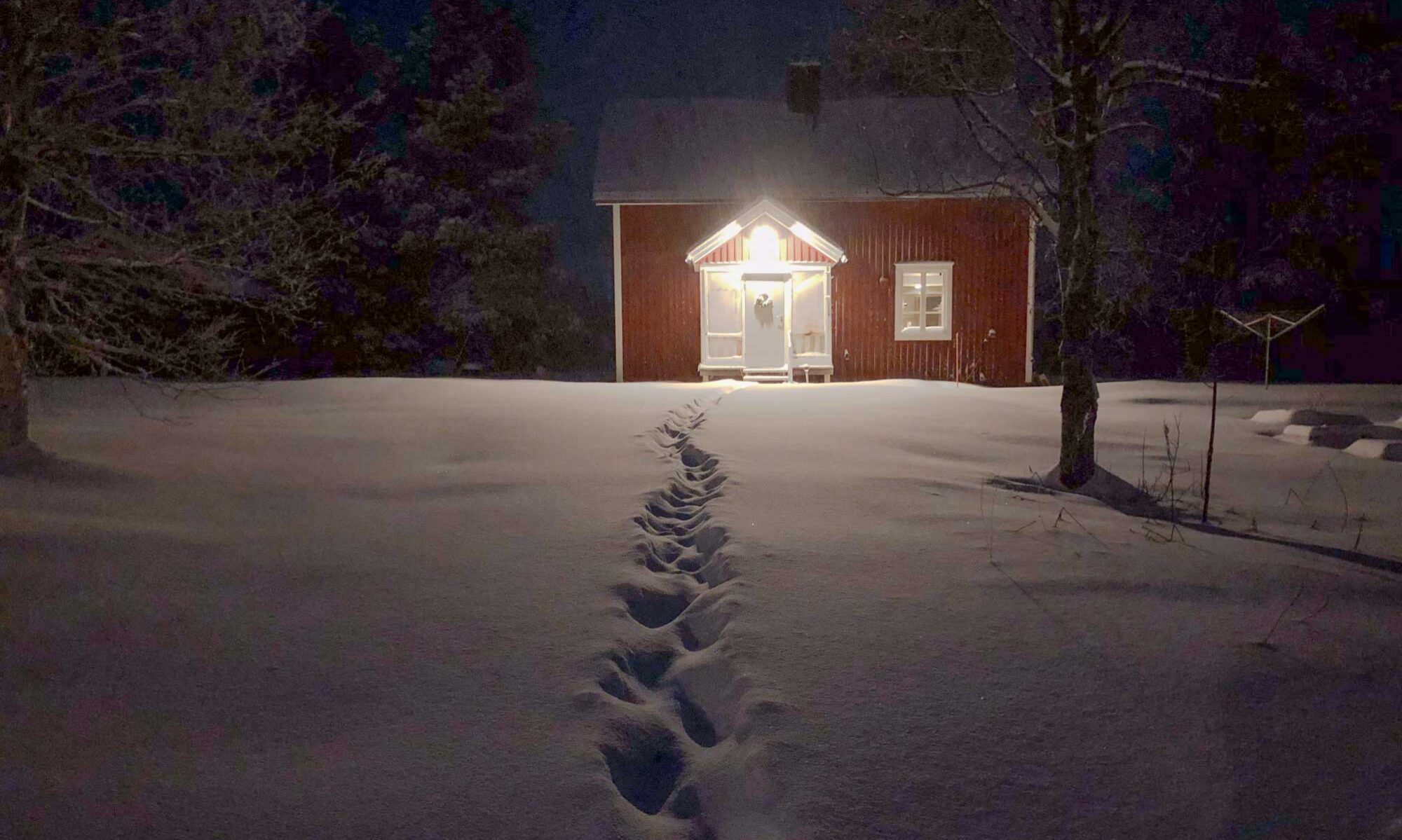
The memorial stone made by the village community says: ”Skog 1832—1997. Settler no 1 Jon Persson. Settler no 2 Per Jonsson. 150 citizens in the 1940s. 75 citizens in 1997.”
A long history made short
Skog is the swedish word for forest or the woods. It is named by the abundance of spruce woods. And Mark was a sami camp site with a wide view over the woodlands, lakes and creaks, before the settlers came less than 200 years ago. But of course there have been native people living here for thousands of years. But the perspective of the Swedish settlers is short. That’s why it’s a long history made short.
The settlers cleared the wood for meadows and fields, built houses and barns of the timber. The creek that flows through the village gave power to a mill, a sawmill and a electric power station. They even floated timber down the stream when snow melted in spring.
During the first houndred years the population grew from 1 to 150. Since then it has diminished til less than 30 today.

Mark is by the way the swedish word for land. And with the neighbouring village named Skog (forest) people think it’s kind of funny and remembers the road sign.
Life was hard for settlers
Life was hard for settlers in these last colonized parts of Sweden. The farms were small, typically with a couple of cows, a pig some hens and a horse. The woods around Skog gave people a living by cutting timber, making tar and cole. Even the big wetlands were harvested for hay. Hunting and fishing were necessary to feed the many children.
Women worked hard and gave birth to up to a dozen children each. They took care of the farm and the family for weeks when the men was working in the woods.
Between 1860 and 1870 the was a severe famin here. Children and other vulnerable people died of hunger. In the end of that period there were just 4 small farms left in Skog. The immigration to USA took place 1868–1923. Hundred years ago there was no roads in this part of Sweden.

The farmer Alex Nilsson shering his scythe down by the water wheel in the creek. His son Olle is watching.
The power plant and the mustasch of Simon
In the 1940s there was both a school, a store and a post office with the telephone switch board in Skog. The village was early with electricity. They built their own power plant and a dam in the creek.
Simon Hellgren was the man who managed the generator. He had a big mustasch so every time the lights bliked they said ”Now Simons mustasches got stuck in the generator again”.

The power plant house below the reservoir.
Spritiual revival
By law every swede belonged to the lutheran church of Sweden. But about 1850 it became leagal for everrone to hold christian services.
Emma Grahn, the second wife of Jakob Grahn, was a spiritual leader in Skog. Her home was the starting point of a christian revival that made half the villagers members of the pentecostal church.
In Mark there was a girl who joined the Salvation Army in the age of 19. She became a popular singer, touring all over Sweden and even in US in the 1940s and 1950s. She was the first christian singer that was allowed to sing in Swedish state television. The local museum has a collection of memorabilia and she is a statue outside the museum. (Wikipedia on Lapp-Lisa.)
Many preachers have grown up in Skog, for example the excentric Kebbe Kristoffersson ”the Son of the wilderness”. (Who built chappels and preached to people when they were not welcome in other places. And whos grandfather was the first settler in Mark.)
In Skog as in Mark there were small churches built. The last service in the last Pentecostal church in Skog was held 2006. Nowadays the house is used as café.

Alex Nilsson and his family is harvesting hay i Skog. He was married to Lilly Grahn (far behind). Behind him three of their children. One of them Stanleys mother with a child in her arms.
Skog & Mark Today
A lot of houses in Skog are summer houses, inherited by relatives. There are about 30 peoplel living in both villages. We are a mix of all ages but the retired are more visible and runs the village community and organizing the feasts.
The telephone ned is removed but in 2007 we got internet by optic fiber. So we hope there is some kind of future for our villages. Even if Skog and Mark is litterally the end of the road. Beyond us is only mountains, wetlands and the Norwegian border.
Stanley Almqvist
